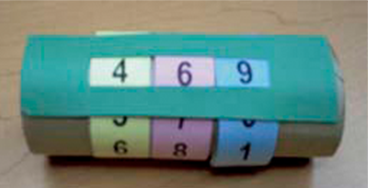B1.5 Count to 50 by 1s, 2s, 5s, and 10s, using a variety of tools and strategies.
Skill: Skip Counting
Recognizing the pattern of numbers from 1 to 9 and understanding how it repeats throughout the base 10 numbering system, namely, tens, hundreds, thousands, etc., supports students in counting and understanding the concept of place value system, including decimal numbers. Patterns in multiples of numbers, like the fact that all multiples of 5 end in 5 or 0, help students to make a connection to divisibility (all numbers ending in 0 or 5 are divisible by 5, for example). Similarly, the regularity in even-numbered patterns (0, 2, 4, 6…) helps establish that the difference between two consecutive even numbers is always 2.
Source: translated from Guide d’enseignement efficace des mathématiques de la 1re à la 3e année, Numération et sens du nombre, p. 60.
To help students develop the skill of recognizing number order relationships, teachers may ask students to skip count up by 1 (28, 29, 30, 31…) or by intervals (2, 10, 15…) and to count backwards by 1 (11, 10, 9…) or by intervals (40, 30, 20…) from a given number.
These activities help students recognize that when counting by 1 or by intervals, any number named is greater than those before it and less than those after it, whereas when counting backwards by 1 or by intervals, any number named is less than those before it and greater than those after it. While these relationships seem obvious to adults, students often get them wrong because they do not consider the concept of regrouping; for example, when asked to name the number before 40, many tend to spontaneously answer 49 because students focus on the 0; they know that a number ending in 0 is always preceded by a number ending in 9, and they forget to consider the regrouping by tens that occurs in our place value system. In contrast, when the same problem is contextualized, students are more likely to give thoughtful responses; for example, in a situation where a child has 20 field hockey cards and loses one, students will readily respond that they have 19 cards left.
Using a homemade abacus or odometer (created with a toilet paper roll and template) helps students compare numbers, skip count, and discover changes related to tens groupings.


Source: translated from Guide d’enseignement efficace des mathématiques de la 4e à la 6e année, Numération et sens du nombre, Fascicule 1, Nombres naturels, p. 46-47.
